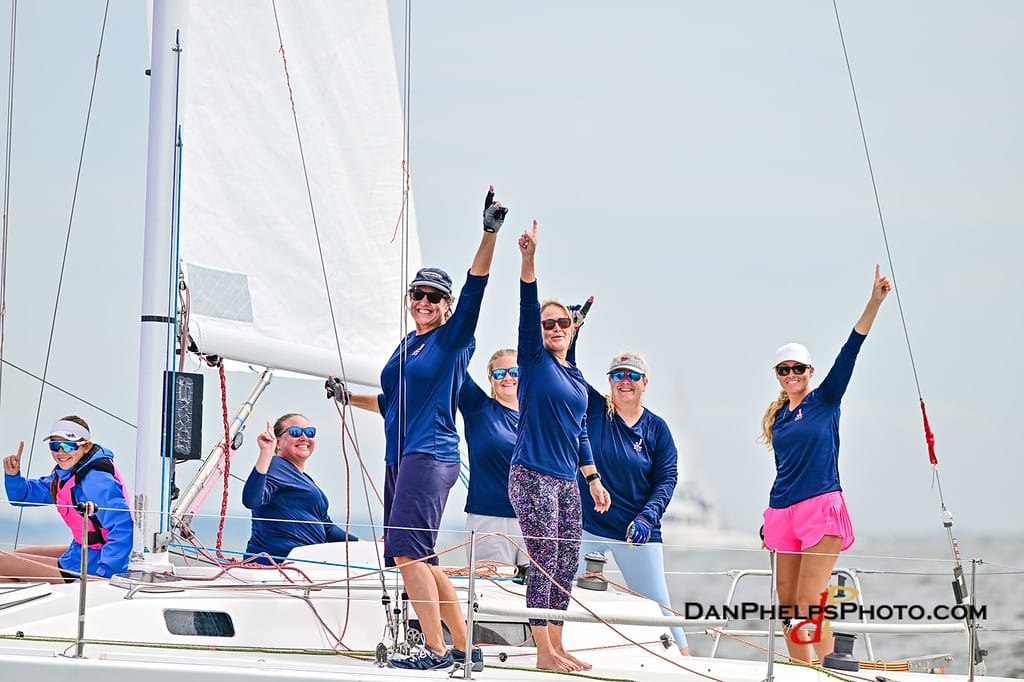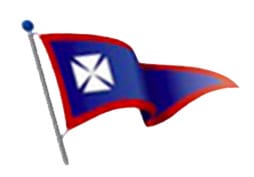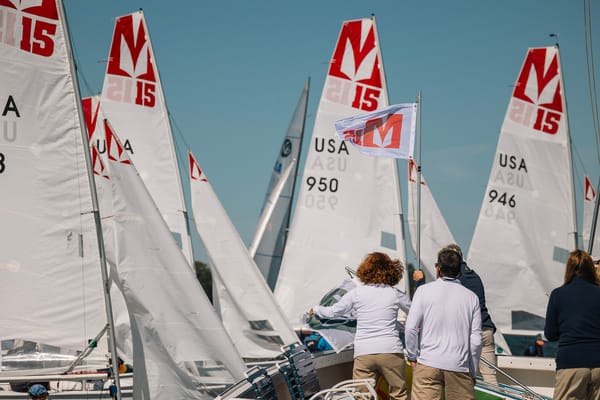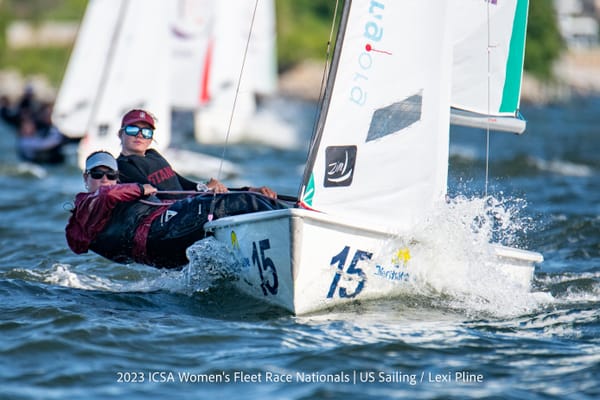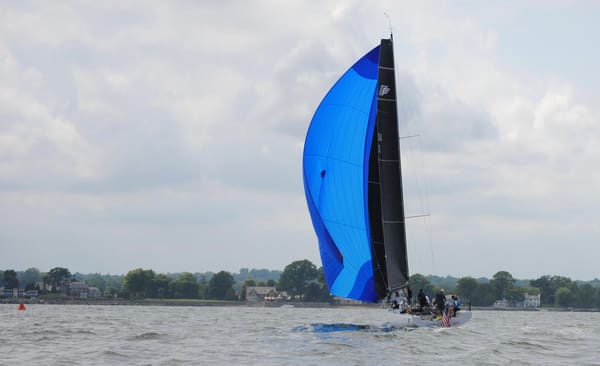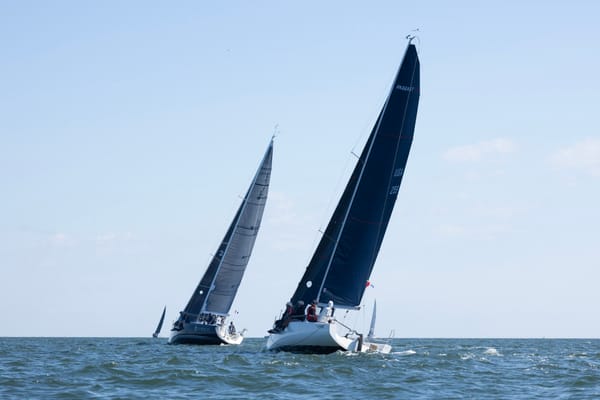Interview with Maddy Ploch
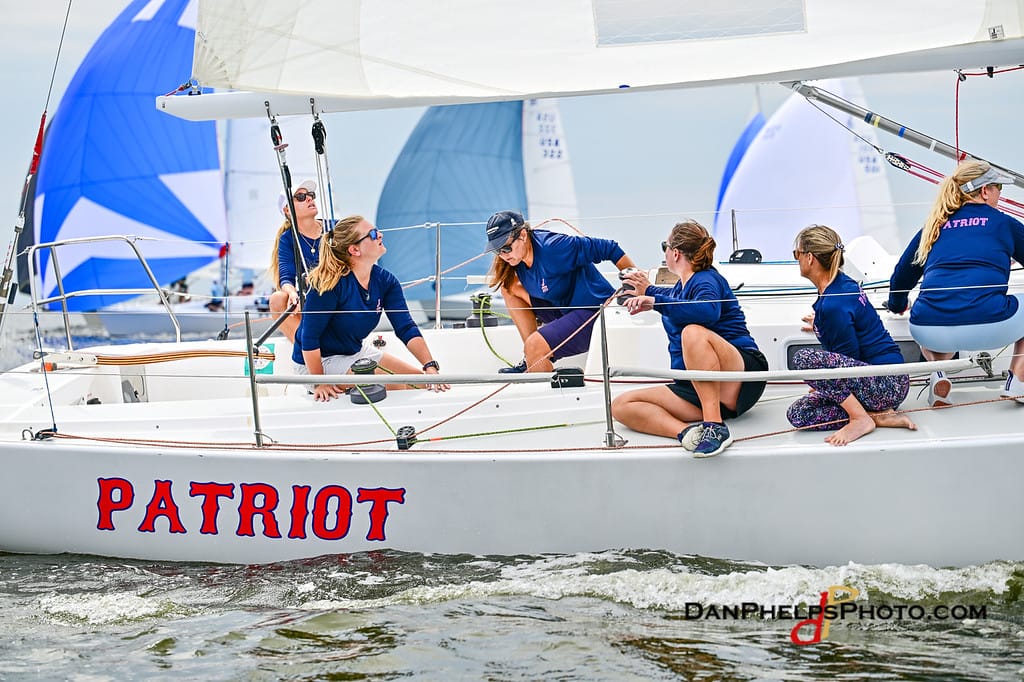
This past Labor Day, Maddy Ploch joined the team of Patriot to race in the Annapolis J/105 Women's Regatta. They won the regatta with a bullet and two seconds. We took the opportunity to catch up with Maddie about her experience.
Bell 42: Congratulations on your victory in a tightly contested Annapolis J/105 Women’s Regatta this past Labor Day Weekend. Before we get into the details of that race, could you tell us a little about your sailing background and collegiate experience?
MP: I started sailing pretty much when I was born. I’ve always been on the water, mostly big boat stuff. And I sailed on the offshore team with the Naval Academy in Annapolis. I think what really helped me succeed there was that I’d done big boat sailing before. I grew up doing it through JAYC and through people around the Long Island sound and up in Newport. So it was really nice to be able to go to Navy and show my skill set. And a lot of my time there was actually spent teaching other people in the program. My crew was made up of people from Pennsylvania, Kentucky, Wyoming. They have little to no sailing experience, come to Navy, try out for the team and then have a lot to learn.
Bell 42: Did you know that it would be like that, before you went?
MP: No, so it was a little bit of a shock. I was lucky enough to be the only freshman chosen to compete at the varsity level. So everyone else goes to Junior Varsity and learns, but I started out as a helmsman right away. Helmsman is different than skipper. We use a military chain of command at the Naval Academy, to denote responsibility and really just set the tone from the start.
The team was designed to offer its members leadership experience, and to help us understand our own leadership style and grow and develop it. My leadership style started out as very commanding, like why can’t you guys just do this, I don’t understand. And it took me a full year to realize, okay, I need to step back from pushing, into guiding. So it was a great leadership experience, a great leadership opportunity.
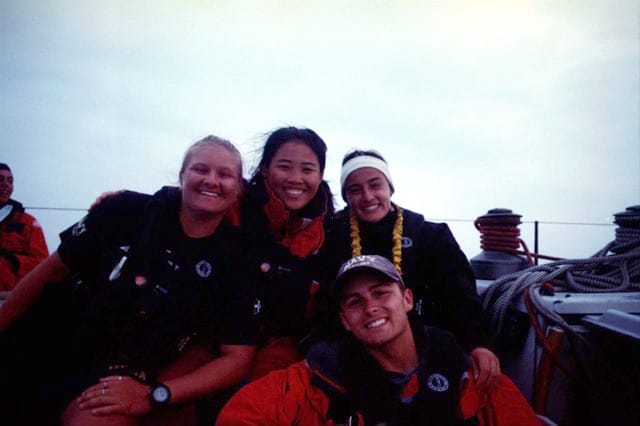
Bell 42: Tell us about the Annapolis J/105 Women’s Regatta. How did you get into the Patriot crew and what was your role?
MP: This was the third time I did the regatta. The first two times, I sailed on Velvet Hammer and this was the first time on Patriot. The first time I did it, in 2022, we ended up getting second to Marie Crump, who’s a bajillion time match race world champion and just a phenomenal person overall. And the second time I did the race, I was like, ‘we’re gonna go back and we’re gonna win this’, and the only way I thought we could win this was if I brought my sister. I said ‘Megan’s gonna come down and she’s gonna drive and I’m gonna call tactics and we’re gonna make the boat go fast’. It didn’t work out in our favor - we ended up getting second again. Twice the bridesmaid.
Then this third year, I was approached by a friend of mine, Eliot Caple, from Annapolis, who I met through the sailing world. And she was like, hey, we’re doing the regatta, I want you to come sail for me. I thought I was gonna be trimming jib or something, but she had me calling tactics and trimming main and we ended up getting a pretty good result there, you know, twice the bridesmaid, once the bride.
There are a lot of phenomenal sailors in Annapolis. There are 37 J/105s in the Chesapeake Bay and they all come out for every event, so everyone sort of knows everyone in the fleet, so right away you kind of know what boats got their bottom redone this year, who got new rigging, which boat’s got a new tactician and all that kind of stuff. So we were able to kind of piece through and strategize on a lot of stuff, but a lot of it was just you know, you mess up, take a breath, figure out how to mess up the least going up the course, and you’re gonna do just fine.
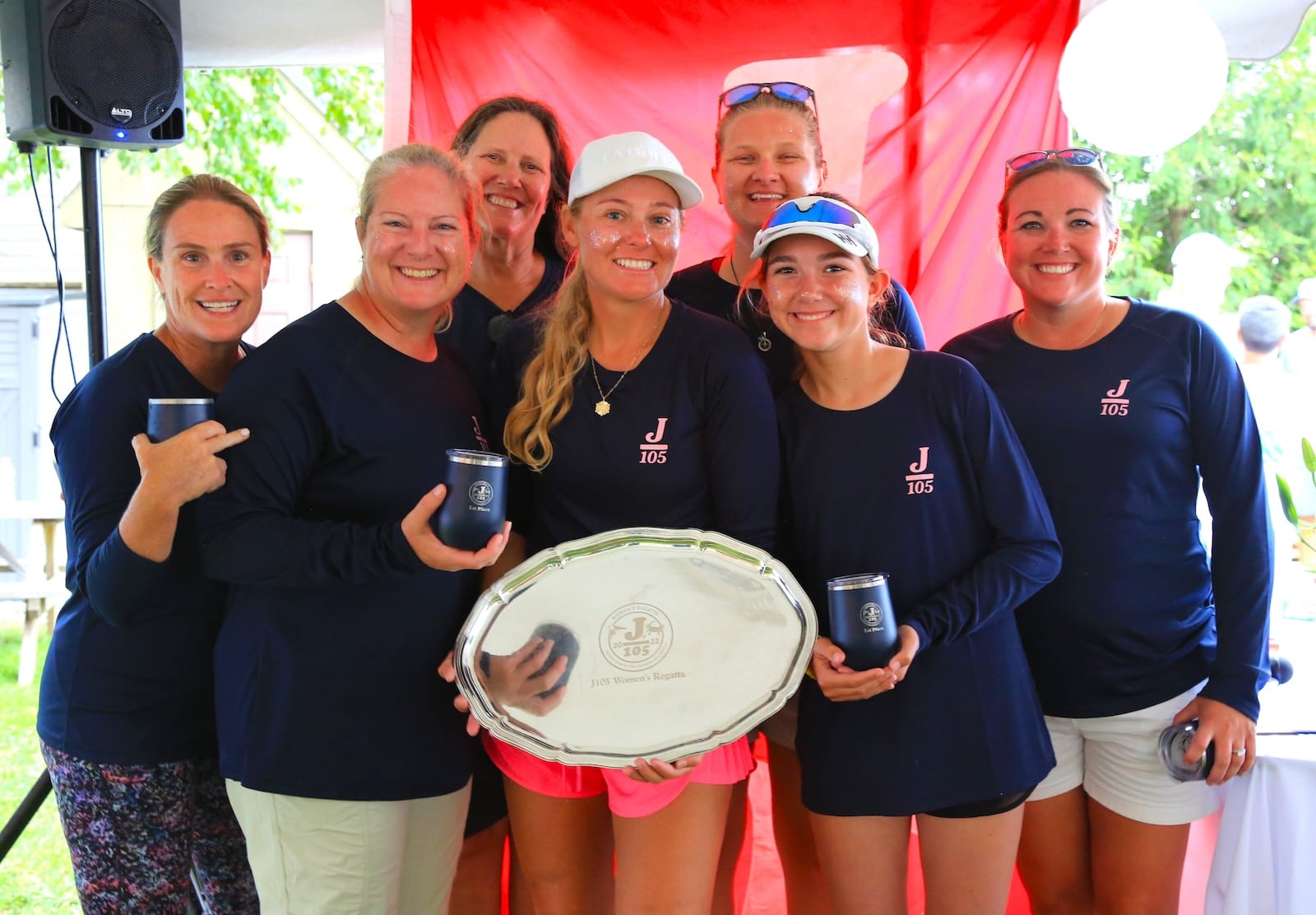
Bell 42: It was a very close finish this year. What set you apart from the rest of the field, what gave you the edge?
MP: A lot of what I’ve discovered through my tactical ability is to observe others and either do or not do. Coming off the start a couple times we were well behind, you know, just getting pummeled, and I had to take a breath, step back, reassess. First things first, make the boat go fast. If you’re not going fast, it doesn’t matter how good you are tactically, you’re not gonna do well. So make some adjustments, figure out our boat speed problem. Okay, now that we’ve fixed that, where are we on the course, how can we get to where we want to be? Oh, look, the left is super-favored, we’re on the right. Okay, now, how do I go from being the right-hand boat? All we can do is win the right. So, it’s all about control and management. And it’s a little different than in the dinghies, cause in the dinghies you can maneuver really quickly. Bigger boats, not so much. So it was a lot about focusing on boat speed and putting ourselves in position to where, four or five steps down the line, we wouldn’t have to be at a disadvantage.
We’d start at the starting line and once we’d started, I’d say okay, right now, at this very moment, if I were going downwind, I would want to round the left hand gate. Okay, so how am I gonna get there? And I worked my way backwards up the course, up the windward leg. Now we’re at the windward mark. Okay, how am I supposed to get in this position? I know these two boats like to go really hard on starboard, but port they’re a little timid. These boats are the complete opposite. Okay, now they’re on either side of us. They chose their favored side. Which one of these boats are we faster than boat speed-wise, which one can we catch? So it was a lot of playing catch up that way and a lot of thinking six or seven moves ahead and seeing okay, I know for a fact they’re gonna get over this breeze line and they’re gonna tack. Okay, if they tack, where would we be? We’d be here. I don’t like that position. Let’s tack now. That way, we get a leg up on them and we get the starboard advantage. There was a lot of thinking that probably wasn’t completely necessary, but that I couldn’t turn off.
The day before the women’s regatta, I sailed the Labor Day regatta on Patriot with Ray Wulff and a couple other people that are regulars on J/105, and we ended up picket fencing the whole event. I didn’t understand how we got so fast. My role was kind of the tactician but I knew I was the least experienced person on the boat. I was the youngest, by far and I was also just not as well-versed in big fleets, like they were, so a lot of my position was to step back, feed information, give suggestions and then really learn the why behind the decisions. That way I can use it for the next event. For instance, going downwind, when do you burn your lead and come up to catch a puff and when do you wait for it to come to you? Alright, the answer is that you never wait for it to come to you. Wow, I didn’t know that! Maybe that’s why my downwinds have been so slow. So it’s really great to just go out with people who you know can teach you. And then when they give you the opportunity, really just absorb everything you can, because everyone’s got something to add, no matter how small it is. And you might be able to pull it out of your pocket later, when you need it.
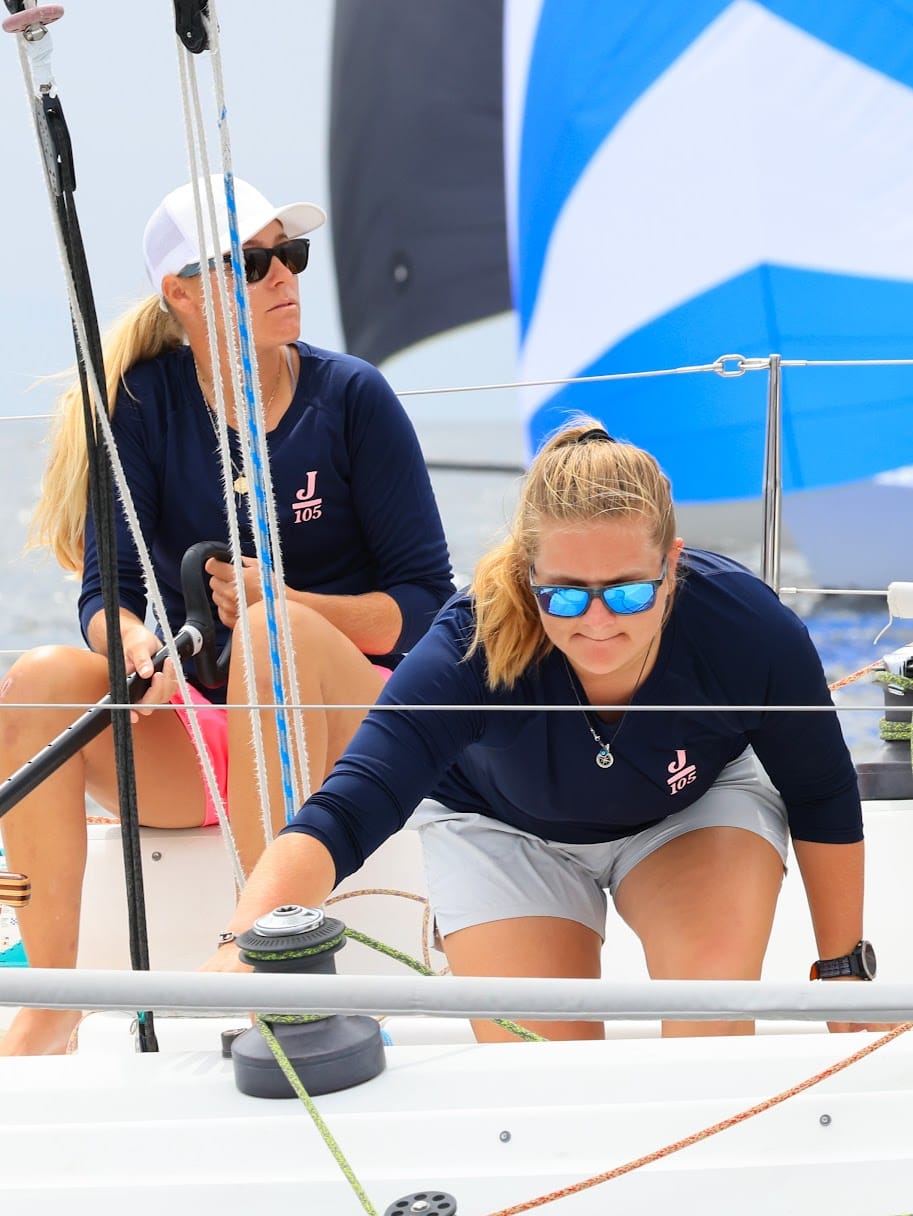
Bell 42: That’s a pretty impressive insight, especially at such a young age. How did you come to understand that?
MP: Well, I remember the 2016 Vineyard race, I was sailing with a bunch of juniors. Peter Becker was kind enough to let us use Young American and he was like yeah sure, go, do the Vineyard race on the 105. I’m gonna put Joe Cooper on there for you and I was like, great, we’ve got Joe. He can help us out with tactics and he can tell us if we’re doing something wrong. But that’s not how it turned out. Joe sat down below deck and slept the entire time and anytime we asked him something, he would just say, ‘risk, reward’ and then go back to bed. So I realized, this is kind of all on us. So at age fifteen, doing a 200 odd mile race, that’s kind of tough. We ended up first in class and second overall and it was just because we would come together, gather ideas and then basically vote on who had the best idea with the least risk and most reward. Sometimes I was outvoted and that was the right decision, sometimes I was outvoted and that was the wrong decision, but there was never any, ‘I was right and you were wrong’. It was always ‘we made a choice and maybe now we need to fix it’. And I think that’s something that’s also really hard to learn at a young age. So being fifteen and thrown into that opportunity was really sort of life changing for my sailing style and the way I decided to start learning.

Bell 42: Sounds like an amazing experience, and one you made the absolute most of. Turning back to the Annapolis Women’s regatta, how were the conditions and what impact did that have on your boat’s performance?
MP: In general, Annapolis is kind of like the LI sound. It’s light and variable almost always and when it’s not, you know exactly where the wind’s gonna shift. It was not so much the breeze that was different, it was more the current. The current is huge in the Chesapeake Bay, especially that far north in the Bay. So you have to do a lot of research and a lot of legwork on, okay, is the dam that’s up one of these rivers open? Did it rain a couple days ago so the flood times are gonna be different? I almost never look at the tide table anymore, because in that area, it could be a couple hours off. And they were off for this year. The first year, I was like no, it said the tide switched at 1, that means we have to go left to get into deep water now. And actually, I shouldn’t have done that, because it didn’t switch until 3. So you really need to use your eyes over your head in that area. You could look up the conditions and say, you know the breeze is gonna pick up at 2 and shift left and then the current’s gonna change at 3. Those are good things to have in mind, but you’ve also got tankers anchored everywhere in the bay. Just stare at them. If they haven’t started turning yet, the current hasn’t changed. And maybe you should listen to the thing that’s standing there telling you it hasn’t changed, over what your computer said.
Going along the lines of current, a lot of the bottom of the Chesapeake bay is soft and so it moves a little bit every year. So I’ve noticed, every once in a while, what used to work on a race course doesn’t work anymore, because the bottom’s changed. And you really have to pay attention to where those shelves come up, because if you’re racing right in the middle of a shelf, you might get a knot and a half of current on the left side of it and an eighth of a knot on the right side. And that is game changing down there, especially when it’s so light.
The conditions were lighter this year than they were in the past, except in one race where there was a storm that rolled through, just a little squall, and it blew eleven. So it was pretty light and variable, which I think was an advantage for me, growing up here. I’m used to sailing a J/105 in light air. But also the sails were different. Every time I’ve done this race, I’ve done it with Doyle sails, this time we were using UK. And you’ve gotta get used to the sail’s shape, so I was glad to have those few hours of practice we did. All in all, a J boat’s a J boat and they’re gonna go when you pull the sails in, they’re gonna stop when you pull them in too far. But that was still a change.

Bell 42: How much of the Patriot crew had sailed together before?
MP: There were only three of us that had sailed together previously, and before this regatta, none of us had ever sailed together with the rest of the crew. So it was definitely different. And you have to assess the situation very quickly. Especially when you have different personalities on the boat and everyone responds a little differently to different things. So if I had to ask for something, I had to ask person A very differently than person B. With my driver, Eliot, I could be like, 'drive in a straight line, you’re messing this whole thing up’. But with my trimmers, I had to be a little more delicate, like 'I noticed that some of the other kites were a little too far in, I’m nervous that we’re keeping our kite in a little too tight, can we try just having a little extra ease, you know after the jibes?’ It’s a reminder that it’s not only where you stand with the person, it’s what you know they respond to.
Bell 42: So not only are you a skilled sailor, you’re an adaptable teacher and a dedicated learner. It’s no wonder you’ve had so much success already, and will surely have much more in future.
